2017 Tata Tigor review, test drive
With an emphasis on style, the new Tata Tigor is a refreshingly different take on the compact sedan.
Updated on Mar 20, 2017 07:36:05 PM
52,401 Views
Follow us on
The Tigor offers good straight-line stability and ride quality is impressive.

Both three-cylinder petrol and diesel engines offer adequate performance but no more. Neither engine is exciting.

The Tigor’s wheelbase is 50mm longer than the Tiago’s. The rear doors and glasshouse is different too.

Only minor details distinguish the Tigor and Tiago till the B-pillar. The Tigor gets projector lenses and a smoked finish for its headlights.
What is it?
The Tigor (pronounced Tee-gor) is the compact sedan version of the well-received Tata Tiago hatchback. It’s also the model that will become the mainstay of the carmaker’s compact sedan range; the capable but slow-selling Zest is set to be repositioned for the taxi market while the Indigo eCS, that started the sub-four-metre sedan segment, is headed for discontinuation. However, the Tigor enters the market at a time when the compact sedan segment as a whole isn’t growing as fast as it once did. Tata Motors, though, is confident buyers won’t see the Tigor as just any other compact sedan. In fact, Tata doesn’t even call it one. A ‘Styleback’ is what the marketers at Tata would like you to see the Tigor as.
What’s it like on the outside?
| Tata Tigor Price, Mileage, Specifications, Features and Variants | |
|---|---|
| Brand | Tata |
| Model Name | Tigor |
| Tata Tigor Price | ₹ 6.00 - 7.94 lakh |
| Tata Tigor Range/Mileage | Petrol : 23.84kpl | Diesel : 27.28kpl |
| Tata Tigor Specifications | Sedan | 4 doors | 5 seats View All Specs |
| Tata Tigor Features | Halogen headlight | 7-inch Touchscreen display | 2 airbags View All Features |
| Tata Tigor Variants | 1.2 Revotron XE | 1.2 Revotron XM | 1.2 Revotron XZ View All Variants |
Study photos of the Tigor and Tiago’s front ends and you’ll find only a few subtle differences. The Tigor’s headlights get a smoked-effect and also use projector lenses. New chrome lining for the lower portion of the glasshouse adds a bit of richness to the Tigor’s look. However, it’s from the B-pillar onwards that the Tigor takes on a whole different identity. The sedan sits on a 50mm longer wheelbase, uses different rear doors and even has a unique window line with a Skoda-like upward kink at the rear quarter glass. Visually though what really makes the Tigor stand out is the coupé-like manner the roof flows into the tail; inspiration for the ‘Styleback’ name. The swooping roof and distinctive tail section make the Tigor look far removed from all other compact sedans that are, more often than not, hatchbacks with a boot tacked on. Certain angles aren’t quite as flattering to the Tigor’s derriére (especially on the diesel version that gets only 14-inch rims) but, on the whole, the car’s shape is attractive and sure to be a big draw.
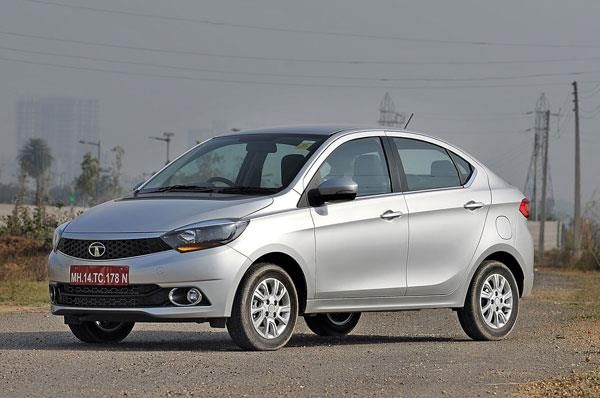
Styling at the rear is neat, helped by the smart tail-lamps, chunky bar of chrome above the number plate and a black plastic strip low down on the bumper to balance visual mass. There are also some nifty details elsewhere on the body. See the blacked-out lip (home to a strip of LEDs) above the rear windscreen? Aside from being a design element in its own right, it’s also the end point for a neatly hidden hump in the roof that’s been incorporated to free up headroom in the rear section of the cabin. Care has been taken to ensure maximum boot space too. How? Tata has ditched the traditional gooseneck hinges for the boot opening and opted for a significantly more expensive multi-hinge and damper arrangement. The setup is less intrusive and helps make the most of the luggage area, which, by the way, is a sizeable 419 litres. Another point to note is that only petrol Tigors will be available with the attractive ‘diamond cut’ 15-inch alloy rims. As mentioned, diesel Tigors make use of smaller 14-inchers. Tata engineers we spoke to told us the heavier diesel required the added cushioning of thicker sidewall tyres to keep ride comfort at the desired level. In all, the Tigor weighs 50kg more than a comparable Tiago.
What’s it like on the inside?
The Tigor shares its smart dashboard with the Tiago hatchback and the ambience in the cabin is rather nice. There’s a nice textured finish to the dash top, the chunky steering is great to hold, the knitted roof lining looks premium and Tata has even put fabric inserts on the doors to add a bit of richness. But fit and finish is still not quite at Hyundai’s benchmark levels yet. The plastics low down on the dash feel hard and scratchy and panel fit is inconsistent at places such as the glovebox.
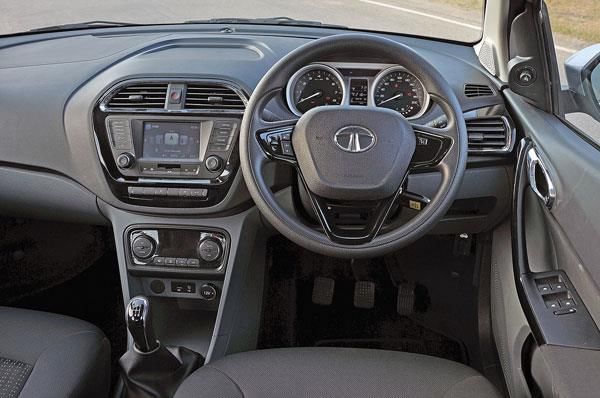
True to Tata’s DNA, the Tigor’s cabin is spacious. And comfort is good too. The front seats are large, and though cushioning is a touch soft, they do offer good support. Importantly, frontal visibility is also really nice, thanks in part to the dash being low set. Rear seat passengers will also like the view out from the large rear windows. Tata has lowered the position of the Tigor’s rear seat vis-à-vis the Tiago in the interest of freeing up headroom, and even six-foot tall occupants will be able to sit upright. Clever scoops on the front seatbacks have also helped carve out a good deal of knee room for passengers here. We did find the rear backrest a tad too reclined but on the whole you sit quite comfortably in the back. Interestingly, the backrest extends from door to door, allowing the entire width of the cabin to be used. Three adults can sit three abreast in more comfort than most other compact sedans, and what’s also nice is that there are sizeable fixed headrests for each of the rear passengers. You also have the option to fold down the well-positioned rear centre armrest when the middle seat is not in use.
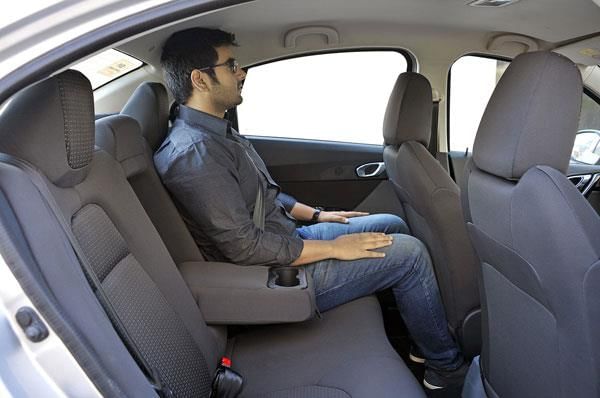
Armrest aside, the Tigor also gets auto climate control, a reverse camera and a new touchscreen infotainment system over and above what’s on offer in the Tiago. The touchscreen is a development of the Harman-developed unit that you’ll also find on other Tatas. The screen isn’t the most responsive to touch inputs (you’ll find yourself relying on the control dial) and catches a lot of reflections, but the infotainment system does score for functionality. Tata has a suite of mobile apps that you can use with the system. For instance, the screen can display navigation maps and instructions from your phone app, and there’s another app that allows each passenger in the car to add songs from their device (via mobile hotspot) to a playlist on the phone paired with the audio player. Worth a mention is the really impressive sound quality from the four-speaker, four-tweeter setup. We also found the infotainment system quite responsive to voice commands especially for radio, audio and climate control settings.
As for space for small items, the Tigor offers plenty. Each door gets a bottleholder, there’s enough storage for mobile phones and even two cupholders on the new rear armrest.
What’s it like to drive?
Like the Tiago, the Tigor will be offered with a 1.05-litre, three-cylinder diesel engine and a 1.2-litre, three-cylinder petrol engine. Both engines come mated to five-speed gearboxes, albeit with shorter gearing to compensate for the 50kg weight increment over the Tiago.
The diesel engine makes 70hp of power and 140Nm of torque, figures which are quite low by segment standards. And the fact is the diesel engine feels adequate, but no more. Performance in town is fair and you’ll be able to keep up with traffic, but when you want to overtake, you’ll miss that mid-range surge we’ve just come to expect from even small turbo-diesels. There is a mild step up in power at 2,000rpm but power delivery remains flat thereafter, forcing you to downshift when you need to get a quick move on. Out on the highway too, you will often be left wanting for power. The diesel engine is also on the noisier side and sounds thrummy when extended. For their part, the gearbox is smooth in operation, though not slick, and the clutch is reasonably light too.
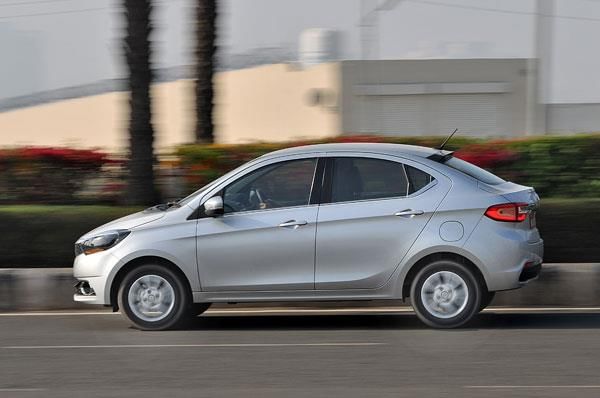
For most urban buyers though, the petrol Tigor would be the one of greater interest. The petrol Tigor uses the same engine as the one on the Tiago but Tata has added a balancer shaft to cut vibrations here. The inclusion of the balancer also required recalibration of the ECU and the net effect is the engine feels far nicer than it does in the Tiago. Vibrations are significantly reduced and fueling seems cleaner too; power delivery is noticeably smoother than the petrol Tiago. Performance in town is decent with reasonable responses to throttle inputs. Fairly smooth gearshifts and the light clutch also help the experience. Still, the 85hp engine does little to excite. The build-up of power is flat throughout the rev range (it revs until 6,500rpm) and it simply lacks zing. And when revved hard, the engine doesn’t sound particularly nice either.
Both Tigors offer drive modes with ‘City’ being the default setting and an ‘Eco’ setting to enhance fuel economy. While we are yet to test the efficacy of the system we can tell you that the diesel Tigor feels a bit labored in Eco while the petrol version remains usable in the efficiency mode. Tata has not revealed fuel economy figures for the Tigor as yet.
Irrespective of which version of the Tigor you drive, you are sure to like the car for its ride and handling. The steering, for one, is well-weighted – light at low speeds and heavier at high speeds – and operates with a really nice smoothness. When going fast, there’s a good connect with the car and though the Tigor rolls quite a bit in the bends you always feel well in control. The Bridgestone tyres offer good grip in the corners as well as under hard braking. Our top-spec test cars came with anti-lock brakes but it’s not yet clear if ABS will be available on lower variants as well.
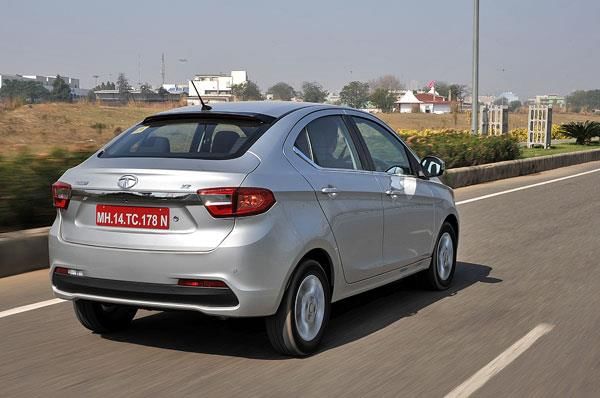
Tata’s newer models have scored well for ride comfort and the Tigor is no different. Concentrate hard and you’ll notice minute up and down movements. But in general, the suspension ably deals with the bumps and lumps, with the chunky tyres further absorbing smaller imperfections well. What’s more, the suspension goes about its business without much noise, adding to the Tigor’s big-car feel.
Should I buy one?
What’s clear is that the Tigor is not just a Tiago with a boot. It’s got a different vibe and that’s all thanks to the way it looks. It is an attractive car and has a certain visual appeal that the typical compact sedan doesn’t have. In a sense, the Tigor will attract buyers to whom design and style get priority over practicality. That’s not to say the Tigor isn’t practical. Much to the contrary, it’s got a well thought-out cabin, ample interior space and a large and useable boot. At the same time, top-spec Tigor’s also address modern day requirements for connectivity and features.
Where the Tigor could have been better is under the bonnet. Both the petrol and the diesel engine could have done with more power. In fact, given the good ride and handling package, the powertrain is the sole area where the Tigor feels a notch down to the existing compact sedans. But here’s the thing. The Tigor will come in under the Tata Zest, which by extension means it will be priced significantly lower than compact sedans like the Maruti Swift Dzire, Honda Amaze, Hyundai Xcent, Ford Figo Aspire and Volkswagen Ameo. Tata is said to be looking at an aggressive price tag for the Tigor with prices likely to range from Rs 4 lakh (estimated, ex-showroom, Delhi) for the base petrol to Rs 6.5 lakh for the top-spec diesel. And that means the Tigor could sit in a sweet spot in the market with no direct rivals.
The Tiago hatchback has already shown there’s a market for a well-priced Tata. The Tigor has the potential to take things up a few notches.
Copyright (c) Autocar India. All rights reserved.

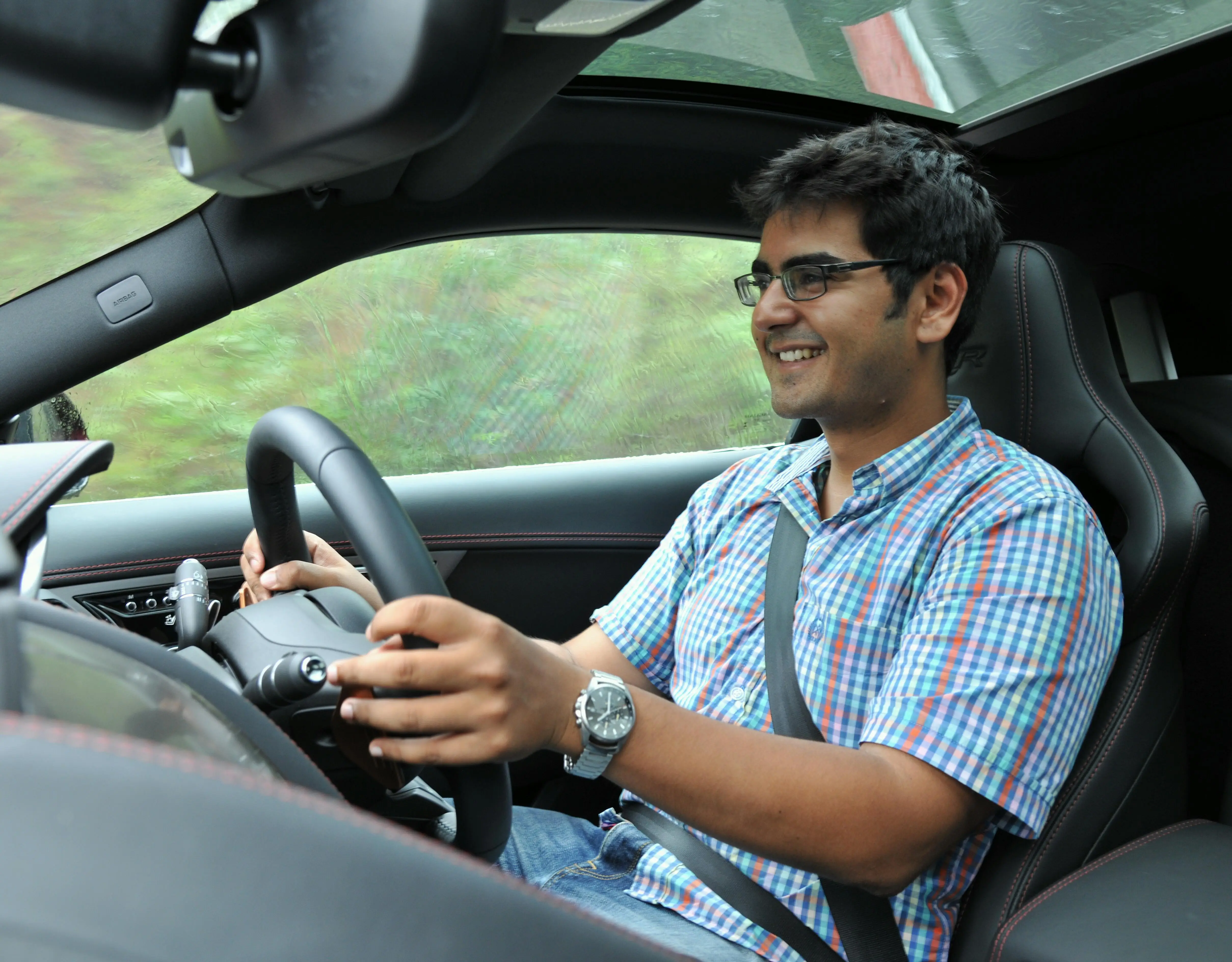
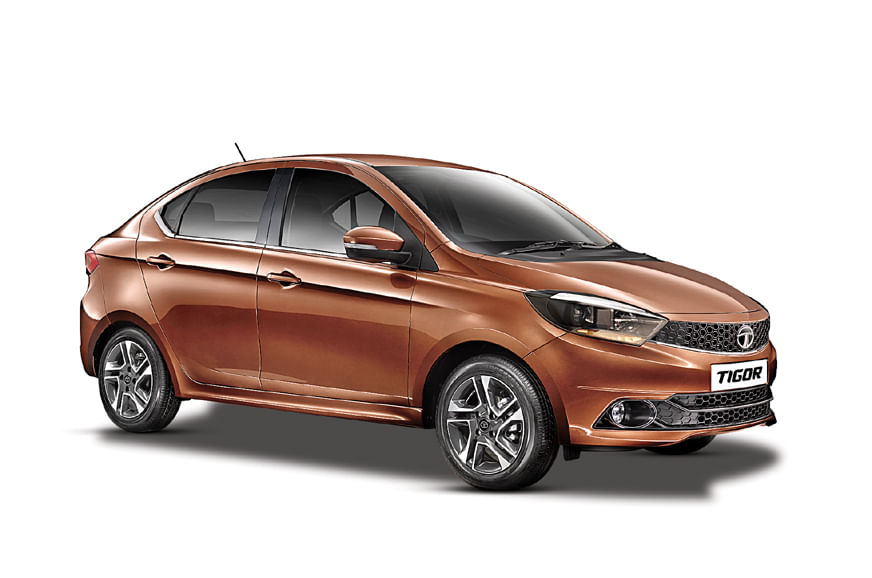


Comments
Member Login
Personal Details
No comments yet. Be the first to comment.